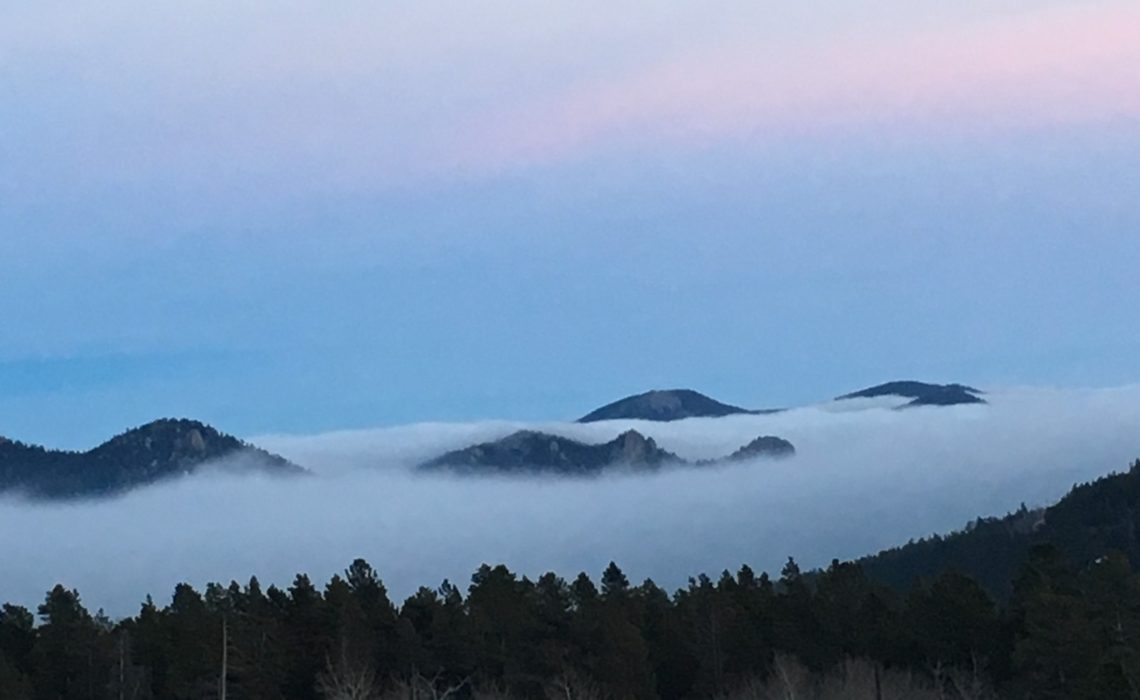
I donned my coat as I got ready to take the dogs out before heading off to work. As I stepped outside the door, I felt pleasantly surprised. Instead of brisk sub-freezing temperatures, it felt balmy with temperatures in the 40s. Taking the dogs back inside, I debated whether to even bring my winter coat with me. If it was the warm in Nederland, it had to be at last in the 50s down below. Fortunately, I erred on the side of caution.
Heading down canyon in my car, I noticed rime on the trees. Rime is a sort of frost/ice that crystalizes on the trees and grasses. The sky became more overcast and the temperature plummeted as I descended down Boulder Canyon. By the time I reached Boulder, it was a brisk 16 degrees according to my car thermometer.
All day long, it remained cold and brisk down on the plains. Yet as I headed home at 6 p.m., the temperatures rose until it reached 46 degrees at our house. That’s not the typical expectation as you climb in altitude, but instead could be attributed to an inversion.
Merriam-Webster dictionary defines an inversion as this:
a reversal of position, order, form, or relationship
The normal relationship between altitude and temperature is for the temperature to drop 3-5 degrees for every 1000 feet gain in elevation. One of the reasons I love living in Nederland is during those hot summer days of July and August when highs can reach the mid nineties in Boulder, but be twenty degrees cooler at our home.
But during the winter, the layer of air in the plains is so cold and dense, it resists warming up, while the less dense air at higher elevations warms up much more quickly. Cold air can sink to the bottoms of valleys during night and become trapped there — known as “cold air damming.” These inversions can negatively affect air quality as pollution is trapped close to the ground by the warm air above.
I got to see this first hand, when we took a winter ski trip to Salt Lake City several years ago. As we approached the valley floor of Provo, thick haze and smog obscured our views. You could hardly see the Wasatch Mountains from downtown Salt Lake, the pollution was so thick.
I’ve seen the inversion from high altitude, creating an almost surreal experience. While living in California, thick Tule fog formed in the San Joaquin valley. As I stood at a lookout in Sequoia National Park, with the sun shining brightly, all I could see was a thick layer of clouds below me, creating a layer of mystery as to what lay below.
In winter, the inversions don’t last long. Usually the cold front eventually makes it way up the mountain, as it did tonight. Within 10 minutes the temperature dropped about 16 degrees, as the cold air climbed up the canyon. But for the bulk of the day, us mountain residents enjoyed a balmy, sunny winter day as our plains counterparts endured winter’s cold.


I’m a big fan of inversions ? Happy New Year!